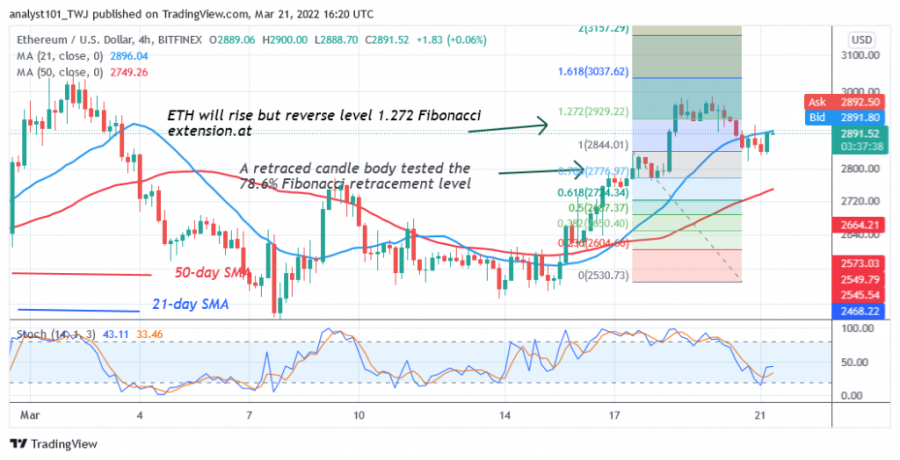Ethereum Retraces above $2,800 Support as Bulls Attempt to Revisits $3,000 Hurdle

On March 16, the price of Ethereum (ETH) broke out above the moving averages as the altcoin reached a high of $2,986. However, the uptrend was short-lived as the largest cryptocurrency met fierce rejection at the $3,000 resistance zone.
Ether retreated and found support above the moving averages. Ether is expected to rise and retest the $3,000 resistance level. A breakout above the recent high will push the altcoin to the high of $3,200. Currently, Ether is moving above the moving averages. However, if the bears break below the moving averages, the downtrend will resume. In the meantime, buyers are ready to push the altcoin to the previous highs.
Ethereum indicator analysis
The largest altcoin is at level 56 of the Relative Strength Index for the period 14. The cryptocurrency is in the uptrend zone and is capable of further upward movement. Ether is above the 25% range of the daily stochastic. The market is in a bullish momentum. The 21-day moving average line and the 50-day moving average line are up, indicating an uptrend.
Technical indicators:
Major Resistance Levels – $4,500 and $5,000
Major Support Levels – $3,500 and $3,000
What is the next direction for Ethereum?
On the 4-hour chart, Ethereum has resumed its uptrend. The Ether price has broken above the moving average and has reached the resistance level of $3,000. The downtrend has resumed after being rejected twice at the recent high. Meanwhile, the March 17 uptrend has a candle body testing the 78.6% Fibonacci retracement level. The retracement suggests that ETH will rise to the Fibonacci extension level of 1.272 or $2,929.22. The market has reached the Fibonacci extension level of 1.272 and is moving down.
Disclaimer. This analysis and forecast are the personal opinions of the author and are not a recommendation to buy or sell cryptocurrency and should not be viewed as an endorsement by CoinIdol. Readers should do their research before investing funds.
Source: Read Full Article


